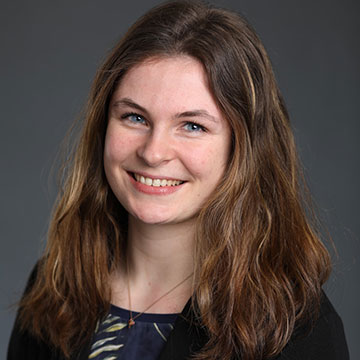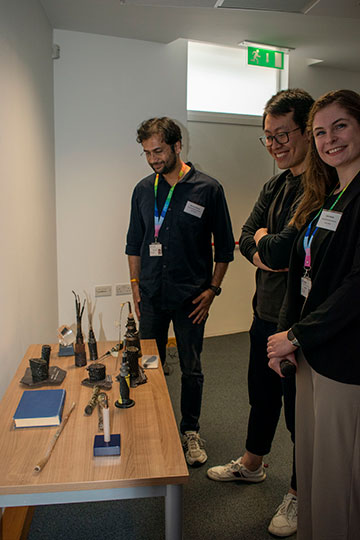
Julie Raulin
According to Mordor Intelligence, the submarine optical fiber cable market will reach US$4.78 billion this year, and will climb to US$8.06 billion by 2029. Driven by the ever-growing demand for bandwidth, subsea fiber cables have become a primary research target for providing low-latency, high-capacity communications infrastructure, and advances in this area continue to spark opportunities—particularly for early-career professionals with photonics backgrounds.
Broadening subsea awareness
From 3 to 5 September, my colleagues and I from the Optica/SPIE Student Chapter at the Tyndall National Institute and University College Cork, in Cork, Ireland, held the Optical Fiber Communications Workshop, which focused on the evolution of subsea communications, current challenges and areas of growth.
In 2022, I attended a Subsea Optical Fiber Communications Summer School in Sweden, organized by the Optica Foundation and Google. It was the only experience I have had with subsea technologies, but I found it very interesting, so much so that I would consider working in the subsea field one day.
It was my interest in deepening my knowledge of the topic that compelled me to share more information with others. My hope was to recreate some of my summer school experience for my colleagues, as well as continue to meet speakers in the area.
Exploring career potential
![]()
Optical Fiber Communications Workshop attendees.
I think a lot of people who are nearly done with their Ph.D. programs are trying to figure out career paths. The workshop provided a good opportunity for us to learn about subsea as a career option, hear from speakers about their careers and companies and explore potential opportunities in the field.
Of course, as we near or pass graduation, we all want to get jobs. Thus, it was fitting that one of the highlights of the event turned out to be the career “speed-dating” component of the workshop. Each of the presenters moved from table to table to answer questions and provide advice on first steps in the industry. Through this interactive session, we had our questions answered, and we learned firsthand how subsea leaders navigated their own career paths.
“I was impressed by the enthusiasm and knowledge of this group,” shared presenter Sandra Delany, General Counsel at AquaComms. “From strong optical science backgrounds to a genuine interest in subsea technology, I could see many of the workshop attendees pursuing a path that brings them to subsea fiber. I enjoyed having the opportunity to raise awareness of how the industry is striving to solve global challenges of political, environmental and regulatory issues, and how they can be part of the solution.”
Deepening subsea knowledge
From Delany’s talk on the global issues around subsea fiber deployment to the presentation given by Geoff Bennett, Director of Solutions and Technology at Infinera, on the intersection of artificial intelligence and submarine cables, sessions piqued attendees’ interests and drove a greater knowledge of not only how the subsea industry is evolving but also how it is transforming into an increasingly necessary part of meeting bandwidth demands.
“Infinera was thrilled to support this program,” summed up Bennett. “The subsea industry needs more early-career professionals, not just with optics backgrounds, but with a wide range of engineering, legal and project management skills, if our vision for the future is to be realized. We need emerging leaders who are passionate about finding solutions and seeking ways to ensure that subsea cable networks can continue to be successfully deployed on a global scale.”

Raulin (right) at the Optical Fiber Communications Workshop.
The Optica Foundation supported this event through its special program grants. From helping us identify the possibilities of a subsea career trajectory to providing for other chapters who are executing similar programs on a wide range of topics to advancing global outreach activities, the Optica Foundation assists early-career professionals and students in our field with these resources. I encourage other chapters to reach out to the foundation with ideas; they are a huge help in exploring possibilities in optics and photonics.
“Supporting students and early-career professionals by sharing more about potential paths in optics is critical to the Optica Foundation’s mission,” said Valey Kamalov, consulting engineer and Director, Optica Foundation Board of Directors. “I hope some of the participants were able to take what they learned and share it, just as Julie and the organizers did by putting this program together. Personally, I love to see my passion for subsea technology transfer to the next generation.”
With subsea fiber intensifying as an infrastructure focal point, the industry will continue to explore this topic and new technologies will emerge. I, for one, am excited to see where it heads, and I hope that this workshop sparked that same curiosity in its attendees. Now’s the time for students and early-career professionals to consider how this field may fit into their professional journeys. The potential awaits those who want to join me to dive in and explore.
For more information on student and early-career schools and programs supported by the Optica Foundation, visit optica.org/Foundation.
Julie Raulin, Tyndall National Institute, Ireland, is an Optica Foundation 2024 Corning Women Scholar and Subsea School participant. She and her chapter hosted an event designed to share the potential of a subsea career with a larger community.
